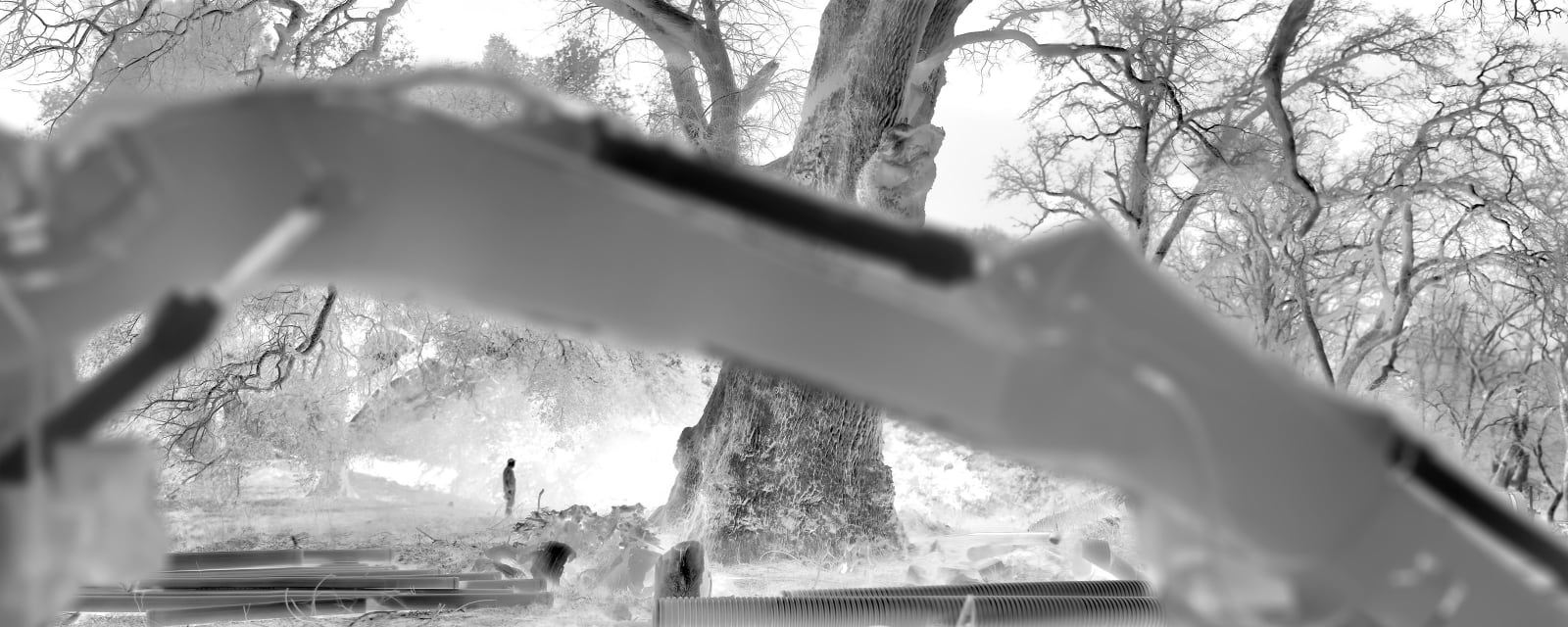Alex Turner American, b. 1984
One of the Largest Valley Oaks by Volume, Estimated 600 Years Old, Groveland Wastewater Treatment Plant, Tuolumne County, CA, 2024
Gelatin silver print mounted to museum board
14 x 35 in.
Native oaks in California are increasingly threatened by urban and suburban development, which fragments habitats, compacts soil, and disrupts underground root and fungal networks essential to their survival. Roads, grading,...
Native oaks in California are increasingly threatened by urban and suburban development, which fragments habitats, compacts soil, and disrupts underground root and fungal networks essential to their survival. Roads, grading, and construction often damage mature trees and prevent natural regeneration. As development spreads, oak woodlands continue to decline.
About the series:
Blind Forest is a cross-disciplinary study of how trees absorb and reflect human and environmental histories. Created in collaboration with ecologists, historians, and anthropologists, the project explores their capacity to reveal shifting climates, cultural values, and systems of power over time. Set across California, Blind Forest employs thermal imaging—commonly used in surveillance, fire detection, and tree health assessment—to visualize the conservation, transmission, and dispersion of heat. Each large-scale image is composed from hundreds of thermal exposures, treating heat as both data and narrative: a high-fidelity record of vitality, stress, and decay.
The trees featured here trace enduring tensions between extraction and preservation, survival and erasure, change and continuity. They are both ecological keystones and mirrors of human intent. In this precarious moment, Blind Forest invites us to consider trees not as passive scenery, but as active participants—living archives that conserve, transmit, and disperse meaning across generations.
About the series:
Blind Forest is a cross-disciplinary study of how trees absorb and reflect human and environmental histories. Created in collaboration with ecologists, historians, and anthropologists, the project explores their capacity to reveal shifting climates, cultural values, and systems of power over time. Set across California, Blind Forest employs thermal imaging—commonly used in surveillance, fire detection, and tree health assessment—to visualize the conservation, transmission, and dispersion of heat. Each large-scale image is composed from hundreds of thermal exposures, treating heat as both data and narrative: a high-fidelity record of vitality, stress, and decay.
The trees featured here trace enduring tensions between extraction and preservation, survival and erasure, change and continuity. They are both ecological keystones and mirrors of human intent. In this precarious moment, Blind Forest invites us to consider trees not as passive scenery, but as active participants—living archives that conserve, transmit, and disperse meaning across generations.

